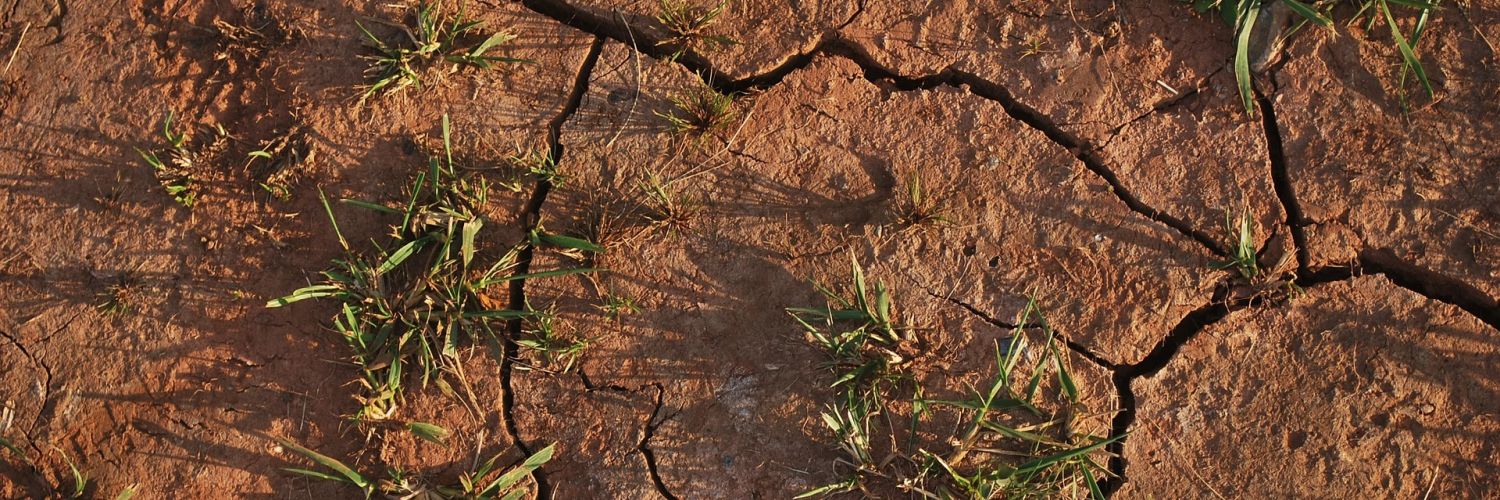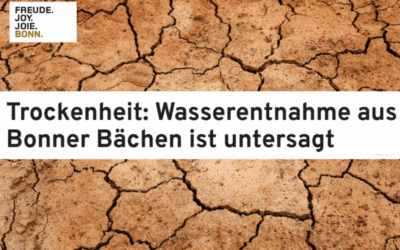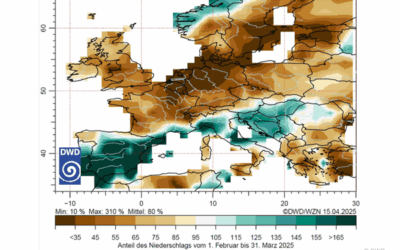Drought
What is drought and how do its effects become noticeable? The page offers a brief overview of the topic, gives a perspective outlook and provides useful links.
© Pixabay
What is a drought?
There are many different definitions for drought (GERICS 2012). This is because drought can have very different spatial and temporal manifestations and thus very different impacts. The German Weather Service (DWD) defines drought as a lack of water caused either by too little precipitation and/or by greater evaporation due to, for example, higher temperatures than usual (DWD 2022).
Classification
Drought is classified according to its duration and effects. The DWD (2022) chooses four types for this: meteorological, agricultural, hydrological and socio-economic (see Tab. 1). UNESCO differentiates drought more generally into three types: while meteorological drought describes a precipitation deficit, a blue-water drought denotes a deficiency in e.g. water bodies and aquifers, and a green-water drought in the soil layers and vegetation (UNESO 2016).
Tabelle 1: Classification for drougth events following the German Weather Service (DWD 2022)
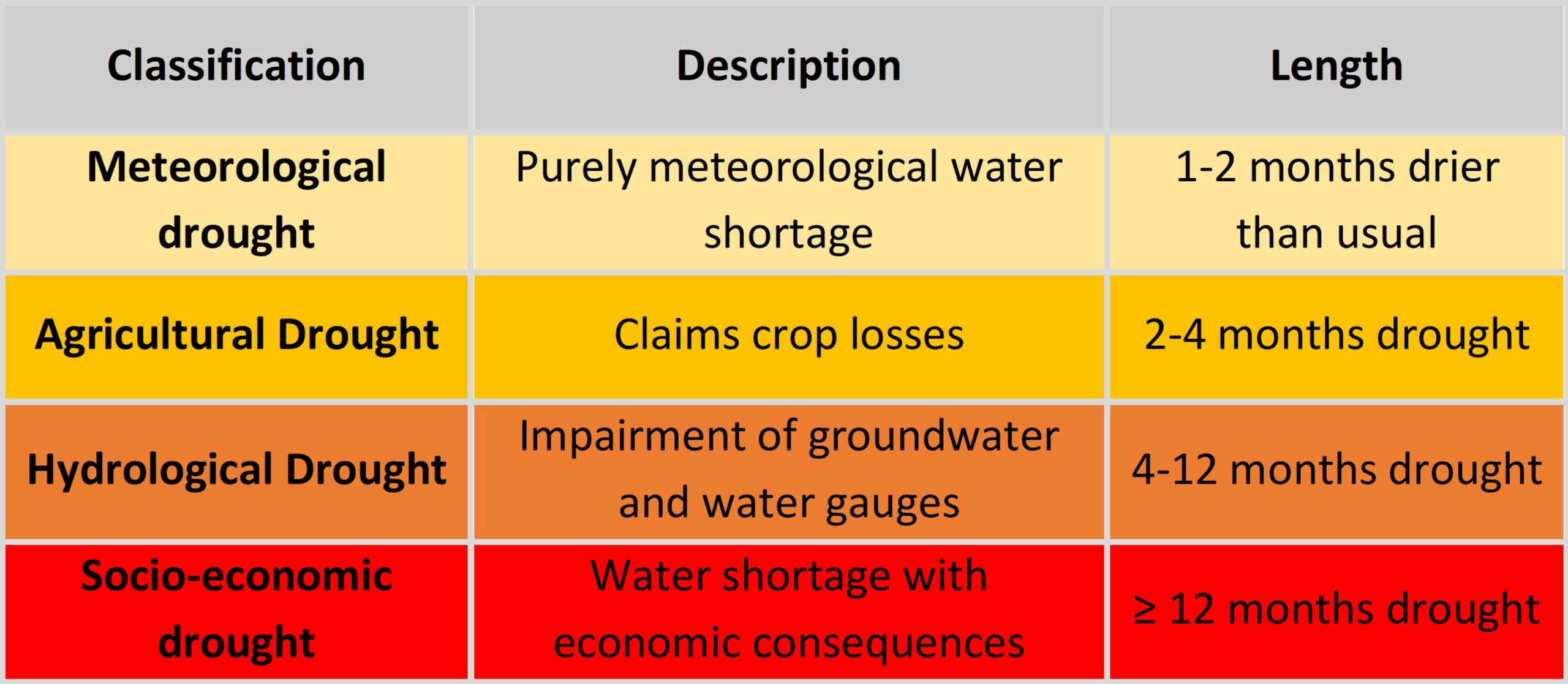
What characterises a drought?
A drought usually extends over a longer period of time and develops gradually. This is an important difference to other disasters such as heavy rainfall events or storms, which occur in a limited and usually short period of time. Furthermore, the term drought is always related to the regionally prevailing weather conditions. Thus, drought is primarily characterised by its effects (GERICS 2012).
The DWD calculates the Standardised Precipitation Index (SPI) for the German region. The SPI evaluates the precipitation conditions of a month in relation to the respective average values. In the event of a deviation, we speak of either precipitation surpluses (extremely wet) or precipitation deficits (extremely dry) (DWD 2022). In addition to precipitation, temperature and the degree of evaporation play a decisive role. The Standardised Precipitation Evapotranspiration Index (SPEI) therefore also takes temperature and evaporation into account (DWD 2022). For the global level, the Precipitation Climatology Centre Drought Index (GPCC-DI) combines the SPI and the SPEI (DWD 2022).
The extent of a drought depends not only on precipitation and evaporation, but also on other factors such as slope, soil properties and vegetation. With the same precipitation conditions and the same degree of evaporation, there can be different soil moisture depending on the soil properties, for example (Thober, Marx & Boeing 2018). For this reason, the Helmholtz Centre for Environmental Research (UFZ), which is intensively involved in the effects and developments of droughts, uses a hydrological model to model drought that takes into account numerous factors, such as evapotranspiration, runoff and infiltration. Thus, in the UFZ-Drought monitor the soil moisture status in Germany is continuously mapped. The monitor is updated daily for both topsoil and total soil down to a depth of 1.8 m (UFZ 2022).
Effects of drought
A drought has different ecological and (socio-)economic impacts depending on its intensity and duration, as the DWD definition already states. A short-term drought usually has few sustainable economic and ecological impacts. In combination with heat, however, considerable health risks for humans and animals can arise, such as disorders of the cardiovascular system (Deutschländer & Mächel 2017).
Longer-term drought events, on the other hand, can significantly affect the economic structures of a country. In recent years, individual years have repeatedly stood out as extreme drought years, such as 2003 and 2018 (Buras et al. 2019). The potential water supply of 188 km³ per year (the long-term average from 1961-1990) was significantly undercut in these two years, with 99 km³/year and 119 km³/year. This figure indicates how much renewable water is available for water management (Tröltzsch et al. 2021). In order for nature to recover from a drought year like 2018, long-lasting precipitation, especially in winter, is necessary so that the soil and groundwater levels can regenerate (Ostermann & Mudersbach 2021). With 2018, 2019 and 2020, three years in a row occurred in which on average less precipitation fell than usual. Even though precipitation in 2021 was average, it was not sufficient to compensate for the water deficit of the previous years throughout Germany (Umweltbundesamt 2022). 2022 was followed by another very dry and hot year. However, the precipitation-rich autumn and winter months of 2023 have now put an end to the dryness and extreme drought in most regions of Germany. The amount of precipitation in 2023 was around 40% above the long-term average. As the soil was able to absorb the water well, there is at least no reason to fear a critical situation in forestry, forestry and water management this year (UFZ 2024). The effects of the accumulation of drought years in Germany can be seen above all in the groundwater and its consequences for drinking water supplies, forests, agriculture and water bodies.
Driniking water supply
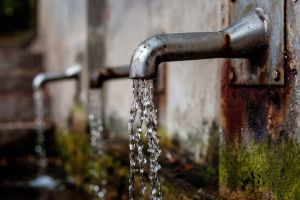 © Pixabay
© Pixabay
Reduced precipitation and high evaporation lead to reduced groundwater recharge, which causes groundwater levels to drop. In Germany, 60 % of drinking water is produced from groundwater capacities (Statistisches Bundesamt 2022). So far, there are no nationwide bottlenecks in drinking water supply in Germany – with a few exceptions. However, changes in the groundwater table and low precipitation in combination with increased water demand, e.g. during heat or due to irrigation in agriculture, can lead to conflicts of use (Umweltbundesamt 2022, LAWA 2010).
Forest
 © Felix Mittermeier | Pixabay
© Felix Mittermeier | Pixabay
Dalling groundwater levels also affect water bodies that are fed with groundwater underground and the forest (Umweltbundesamt 2022). Low groundwater levels and reduced soil water storage lead to drought stress in trees, especially during successive drought years with a lack of soil water replenishment in autumn and winter, and pose a long-term threat to forest stands. Drought over the period 2018-2020 has increased forest mortality in Germany to record levels (Bolte et al. 2022). In addition to changing the water balance of forests, drought also increases the risk of forest fires (Zimmermann und Raspe 2021).
Agriculture
 © iStock | Taglass
© iStock | Taglass
In agriculture, a significant water shortage means that less plant-available water is available and crop yields are reduced or fail due to reduced plant growth (Thober, Marx & Boeing 2018). The drought of 2018 claimed crop losses of up to 70% in some cases (Klimareporter 2019). According to the German Farmers’ Association (DBV), the harvest in 2022 was also below average compared to the period 2014-2021. With a 20 % yield loss, grain maize was particularly affected (DBV 2022).
Water bodies
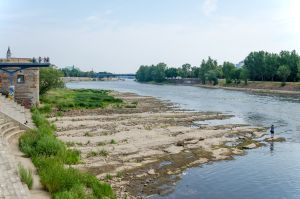
Elbe, Magdeburg 2018: © Pixabay | Sabine Kroschel
Furthermore, in recent years, periods of low water due to the restriction of inland waterway transport on many rivers led to serious supply bottlenecks and the output of power plants was reduced due to less available cooling water (Guido 2022). In 2018, loading capacities had to be reduced on the Moselle and Rhine and navigation was temporarily stopped completely on the Elbe and Oder (Handelsblatt 2018). In 2022, the bottom of the Rhine near Karlsruhe was exposed for the first time in 50 years (UFZ 2022). Furthermore, low water levels affect the flora and fauna as well as the oxygen content of water bodies, thus endangering the ecological balance and diversity (NABU 2018).
Future expectations and forecasts
The ecological and economic consequences of the recent drought are unmistakable. According to current forecasts, the frequency and intensity of weather extremes is expected to increase overall. Due to drier and hotter summers, drought and heat will become key hazards in Central Europe, lasting longer and affecting larger areas. The east and southwest of Germany will be particularly affected (IPCC 2014, UBA 2019, Jacobs et al. 2019). But how can we look to the future in light of past events and current climatic developments? To be able to assess this, it is useful to look at the development trend of recent years.
Abb. 1: Drought develpment in Germny from 1991-2020; UFZ 2024.
Development trend in recent years
For this purpose, the UFZ compiles the drought magnitude, based on the drought monitor, which compares the extent of drought years (Fig. 1). This takes into account, here for the total soil up to 1.8 m depth, the vegetation period from April to October of each year (UFZ). Even though droughts occurred repeatedly in the 1990s – and also in the decades before – the accumulation of drought in recent years is a clear trend. In particular, the three consecutive extreme drought years of 2018, 2019 and 2020 have not occurred in this form since 1952 (Fig. 1). The graph further shows that spatial differentiation is necessary. The regions in the north-east of Germany, which tend to have less precipitation, are particularly affected by water shortages (UBA 2019). However, in the figure for 2023 it is also clearly noticable, that the rainy autumn months have had an improving impact on drought in Germany (UFZ 2024).
Drought events will continue to pose major challenges to socio-economic structures in the future. The goal must therefore be to make structures more resilient to drought events through effective adaptation strategies. At the federal level, mechanisms for this include the German Adaptation Strategy (DAS) (DAS), the EG-Wasserrahmenrichtlinie (WRRL) and the Water Resource Act (WHG), as well as the National Water Strategy. This includes, in particular, the promotion of research and knowledge transfer as well as the development of adaptation and prevention measures, such as adapted crop cultivation or insurance solutions (more on this in the DKKV-Drought-Statement).

With the BMBF funding measure "Water Extreme Events (WaX)"
… the Federal Ministry of Education and Research (BMBF) is funding 12 research projects that develop new approaches to the management of water-related natural hazards such as heavy rain, floods and drought across disciplines and sectors. For example, approaches and strategies are being developed for drinking water supply during times of drought, for water storage and for sustainable water management.
As a transfer and networking project, the DKKV is supporting the projects together with the University of Potsdam. The project facilitates intensive networking and exchange between the research projects, creates synergies and, through a cross-project synthesis of the research results, generates a sustainable and target-group-oriented transfer to practice.
Created: Februar 2023
Current Information
Drought: water withdrawal from Bonn streams is prohibited
From June 5, 2025, water abstraction from Bonn's streams is prohibited by general decree due to persistent drought. Despite some rainfall in spring, the water levels remain critically low, which is putting a heavy ecological strain on the streams. The regulation...
Drought monitor and soil moisture viewer show alarming situation in northern Germany
The drought monitor of the Helmholtz Center for Environmental Research (UFZ) shows a worrying development: Many regions in Germany are currently experiencing a drought with a statistical annuality of 50 years. The topsoil, which has hardly stored any water in the last...
Unusually Dry Spring 2025
Germany is experiencing an unprecedented rainfall deficit in spring 2025: The extremely dry weather conditions during the approximately ten weeks leading up to Easter resulted in the lowest precipitation levels ever recorded nationwide for the period from early...


